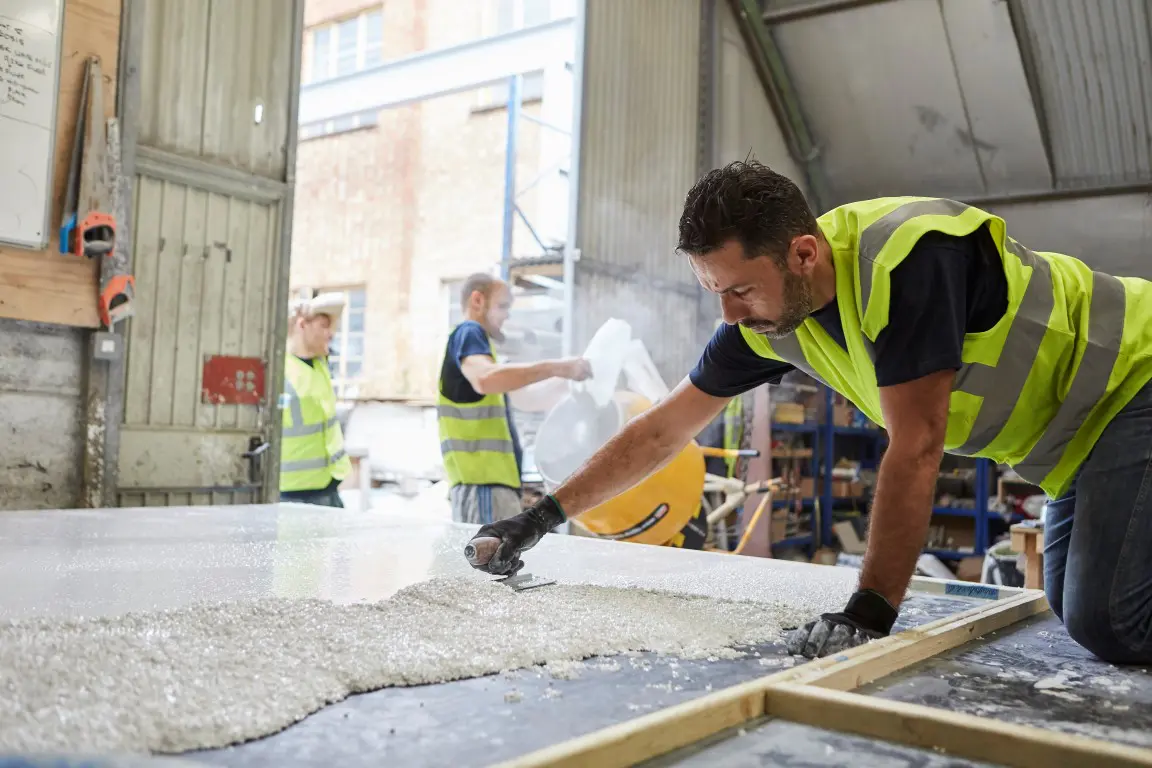It’s well documented that Diespeker & Co was one – if not the first – terrazzo business in the UK, being set up in London in 1881.
However, did you know that Diespeker has been credited with being one of the earliest practitioners of precast terrazzo? In the 1920s, it’s said that Diespeker created a method of creating reinforced precast terrazzo, allowing a much wider use to be made of the material.
Terrazzo is often poured in situ, meaning a liquid form of the material is dispensed directly to the host surface to give a seamless finish. This is perfect for flooring in many locations. Precast terrazzo, on the other hand, is where terrazzo is poured not on site, but into a mould in the factory to create a particular object. And while some might associate pre-cast terrazzo mainly with countertops, there’s a wide range of uses, including stairs, columns and even artwork (one recent commission was for a sculpture based around a baby-change!).
These pieces are made in our Bermondsey factory and transported to site. Some are single piece precasts, but others are made up of several pieces, put together in their final location.
Over the years this has resulted in some unusual jobs. One of these was for architect John Outram in the 1980s, whose ‘temple’ style stormwater pumping station on the Isle of Dogs featured huge pieces of precast fins for concrete columns. Each of the fins weighed two tons. More recently, oversized precast counter tops for a domestic environment were lifted by crane to a first floor apartment.
Both of these projects were cement terrazzo with its accompanying weight requiring tricky handling skills. But in the past few years, Diespeker’s growing expertise with resin (or epoxy) terrazzo means that precast terrazzo is a more practical option in some scenarios. We’ve been busy making coffee table tops, kitchen counters and restaurant bar tops.
Both cement and resin terrazzo offer flexibility of design, with bespoke options available at the Diespeker factory. Some clients enjoy browsing the many slabs of potential aggregate available to view in the factory yard, whilst others prefer checking out what’s available online. Any combination of colours is conceivable. Alongside traditional marble chips, other ideas for materials to use in the terrazzo include coloured or glow-in-the-dark glass, semi-precious stones, seashells and recycled products, echoing the zeitgeist.
Our experienced teams will guide you in the right direction for your pre-cast project, in terms of whether you opt for cement or resin, the size, whether one piece will work or you need several, and what materials you can use in the mix.

